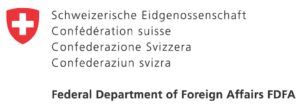In 2011, at the time of South Sudan’s independence, there were fears that the country would become a home to violent extremists. However, there is consensus in the literature that levels of violent extremism (VE) in the country are low at present. It is however noteworthy that there are many definitions of extremism and violent extremism. For the purposes of this report, emphasis is placed on extremism and terrorism in the context of the global threat of extremism and terrorism, rather than on ethnic extremism in South Sudan. This is due to the difficulty of distinguishing genuine political grievances from extremist ideology, as the lines between the two are often blurred in South Sudan.
The key findings from the literature are:
- South Sudan appears to have become a place of transit for Islamists travelling from East Africa to North Africa. However, the extent to which this is the case is unclear.
- South Sudan is on the ivory smuggling route used by the Lord’s Resistance Army (LRA) insurgency (Van de Merwe, 2017).
- Support for faith-based violence in South Sudan appears to be higher among Muslim religious leaders than among Christian religious leaders. This is attributed to the fact that these Muslim religious leaders are likely to have received their training in Sudan (the north) before South Sudan seceded (Romaniuk et al, 2018).
- There are a limited number of initiatives and programmes to prevent violent extremism in South Sudan. To date these have included capacity building in the education sector and teaching anti-money laundering and counterterrorist financing techniques.
There is a very limited body of literature on violent extremism and terrorism in South Sudan, especially in the context of the global threat of violent extremism. The literature does not mainstream gender.






